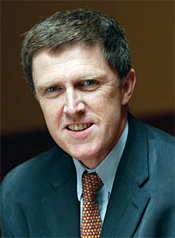
 |
Opening up network service control points for more flexibilty
Superficially, today’s fixed and mobile telephone networks are not too different from those of thirty or more years ago. You dial a number and signalling takes place to connect your call to the other party. Sure, the numbers look different now. And they’ve added some features that make things more convenient, like a built-in answer phone service, caller identification, hunt groups and multi-party calling.
We sense as service users that mobile telecoms provide a more personal service with greater utility. Call the number and you connect to the person, not the location, wherever they are, whatever the time.
People of all ages have adopted text messaging enthusiastically as an additional, highly valued communication option. Increasingly, mobile email and high speed data are also becoming more commonly used, blurring the boundary between person to person telecommunications and the web. People are nomadic, and it is clear that extra attributes such as location and presence can be utilised to create services that are more user aware and therefore
useful to the user.
Blurring boundaries
To adapt the rigid A to B model that we started with so that these boundaries can be blurred, telecommunications engineers adopted a layered model and ensured that the signalling aspects of a service were separated from the actual communication channel. This was named Signalling System 7, or SS7 for short. The same principles have been reused in SIP – the IP-based equivalent – that will, in all likelihood, eventually replace SS7. The core network provides the signalling, switching and channels to deliver the service. The layer above is the service layer. It is in this layer where intelligence is added to the signalling and basic switching function.
The service layer is implemented by one or more service control points (SCPs). SCPs are also commonly referred to as an intelligent network platform, or IN platform. When the network switch receives signalling for any kind of telephone number other than a standard geographic number (which it will route directly), it passes control of the call to a designated SCP. The SCP figures out what to do, perhaps to perform a number translation, check and authorise the call depending upon a prepaid tariff and balance, or look up additional information such as subscriber ID. Throughout this process, the SCP is in charge and controls the call.
Horizontal SCPs
So far, so good. So what’s the problem? Essentially, it is that SCPs are only available as a complete, vertically integrated hardware and software system. In other words, a ‘box’ that you connect into the network to perform predefined functions.
They were designed in the 1990s or earlier to provide the limited range of standard telephony services at that time and to comply with the ITU and 3GPP standards. As the SCP is controlling phone calls, it is engineered to meet the exacting requirements for network equipment. The deployment requirements, the restricted ambition in terms of the range of services when the SCPs were designed, the tight vertical integration and severe structural rigidities, mean that the end user services are essentially pre-baked into the SCP.
All this means adaptation of services has to be done by the SCP provider and is extremely expensive, often with very long lead times. It means that the communication service provider can only sell and market a limited range of standard, utilitarian services. They cannot experiment or innovate.
Need to innovate
Traditional SCPs are characterised by high prices, inflexibilities, single sources for changes, slow evolution and slow enhancement. As a service provider, once you have procured your SCP, you are a hostage to fortune. Well, at least everyone is in the same boat. But meanwhile voice minute price points are in decline and all service providers are under tremendous price pressure. And the insurgent VoIP-based, price focussed competitors are chasing hard.
It used to be like this in enterprise IT. Enterprises bought a complete, vertically integrated stack of hardware, system software and applications from a single vendor. This has all changed now. There are commodity hardware providers, system software providers and application software providers. There is competition within each layer. The competition has driven the price points down, platform performance and flexibility up, and application innovation up. There is something intrinsic at the heart of all this; open systems and architectures promote competition and result in lower prices and innovation. It’s the basis of all free markets.
Service agility
What is needed is a solution that enables service agility in the telecoms network through an open, flexible platform that utilises commodity server hardware; in other words, a modern IT system designed explicitly for the telecoms network that unlocks the value of the telecoms service layer.
With this approach, new services can be created and delivered at a fraction of the cost and timescales normally associated with the telecoms industry. In turn, this provides operators with the advantage needed to compete with the plethora of new device oriented applications currently hitting the market.
Opening up their SCP platforms to the burgeoning Java developer community will see increased levels of innovation in person to person communications, which make up 95% of all operator revenues today,sustaining operator market lead in these services.
OpenCloud provides the telecommunications industry with Rhino, a real time application server for agile development, deployment and efficient management of person to person communication services.
| visit http://www.mbmagazine.co.uk/hq/inc/www.opencloud.com |
